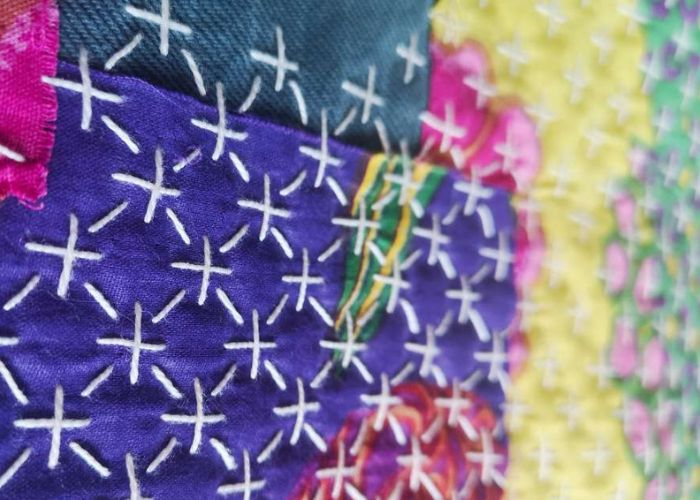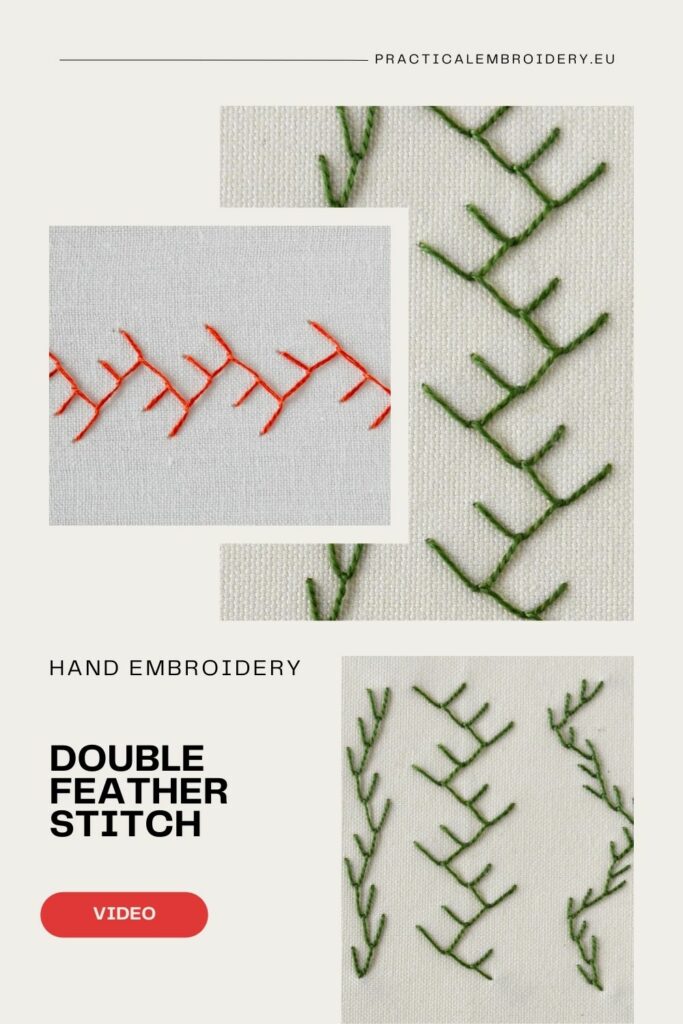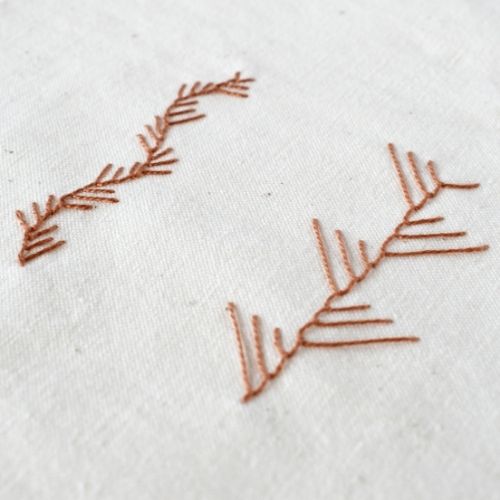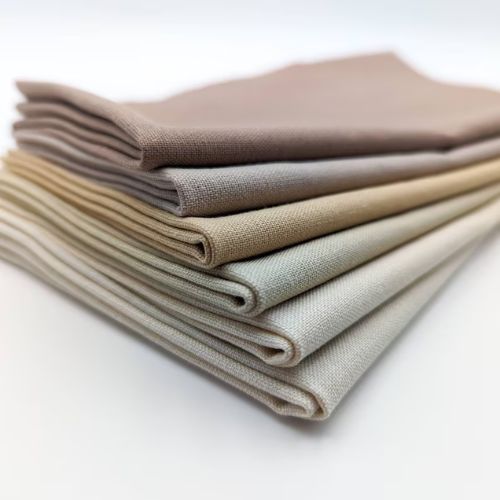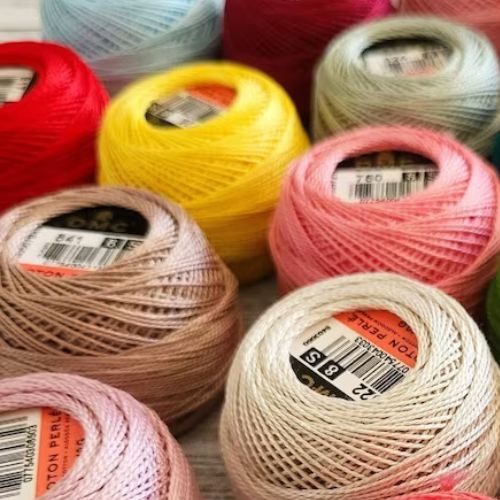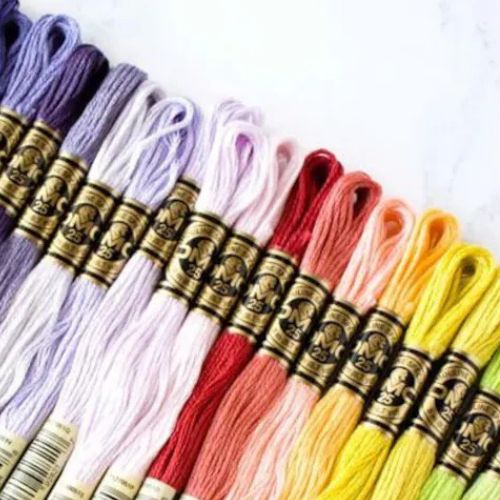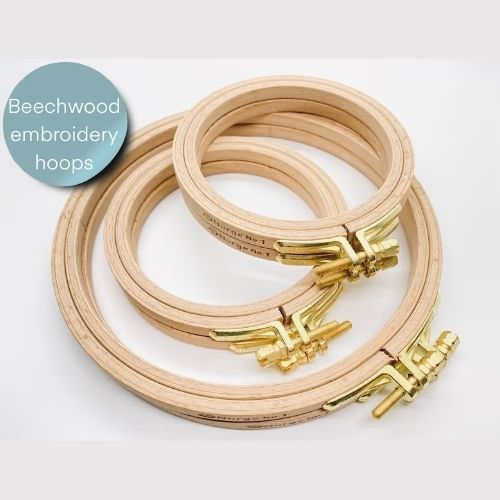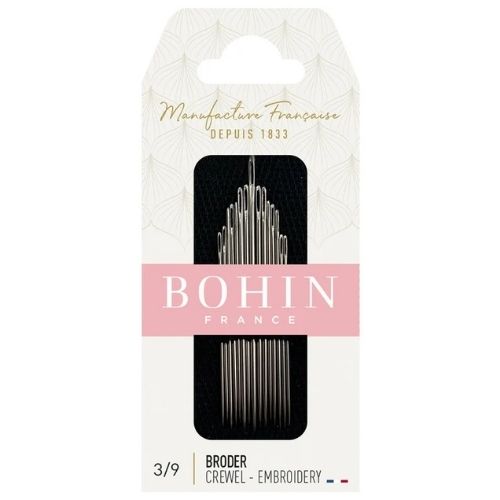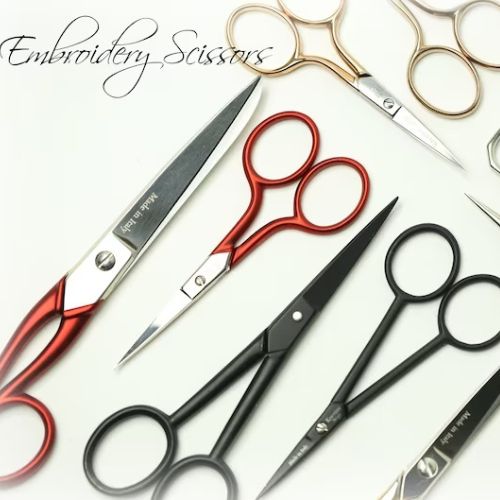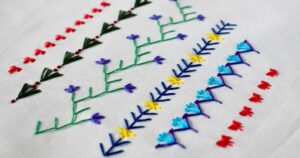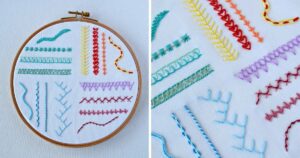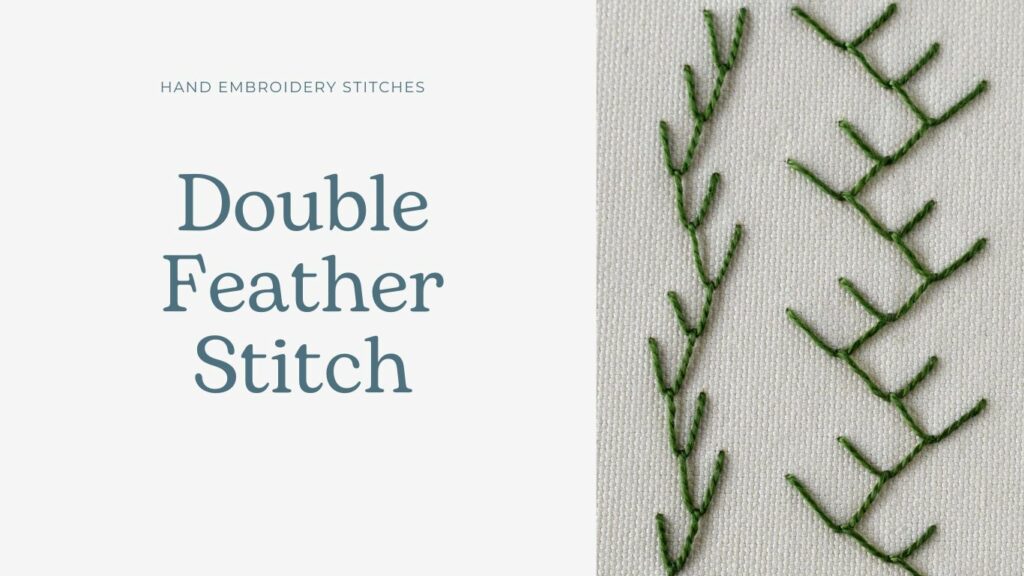
Double Feather Stitch
Double Feather stitch is a variation of a Feather Stitch. It is a series of V-shaped stitches connected between them in a zig-zag shape line. This stitch looks good on straight lines and slight curves, which makes it perfect for botanical embroideries.
Other names of the Double Feather Stitch
This hand embroidery technique has alternative names, such as Point Anglais, Briar Stitch, and Double Coral Stitch.
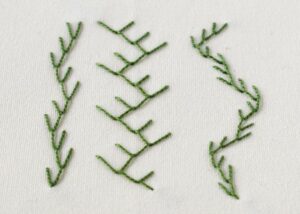
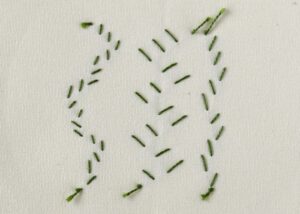
Applications of the Double Feather Stitch
Double Feather stitch is excellent for decorating the seams and for borders. To create unique border designs, you can combine a Double Feather stitch with other decorative stitches, like French Knots of Lazy Daisies.
Also, this stitch is widely used in floral embroidery – for branches, twigs, or vines. If you want to use a double feather stitch for filling – make rows of this stitch, one next to the other, and fill the fabric with beautiful texture.
More Variations of the Feather Stitch
- Feather Stitch
- Maidenhair Stitch
- Closed Feather Stitch
Learn how to embroider Double Feather Stitch
Follow the step-by-step tutorial with detailed photos below, and you will learn the Double Feather Stitch stitch quickly. If you are a visual learner, watch a video lesson in the tutorial or on the Practical Embroidery YouTube channel to learn this hand embroidery stitch faster.
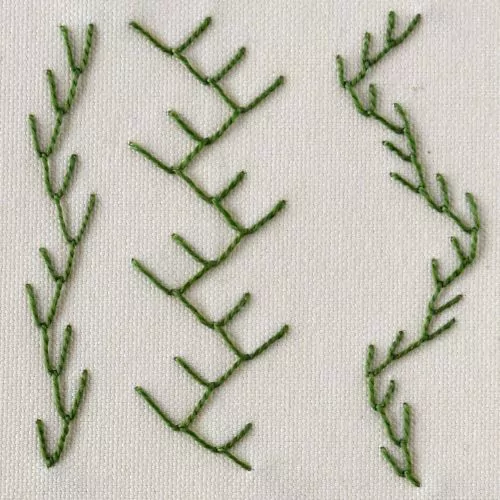
How to embroider Double Feather Stitch
Step-by-step hand embroidery tutorial
Instructions
1. Mark five parallel lines on the fabric.
2. Start embroidering from the first mark to the left. Make a straight stitch from the first mark to the third one. Leave a loop of a working thread open.

3. Take a needle to the surface on the second line inside the loop, one stitch below.
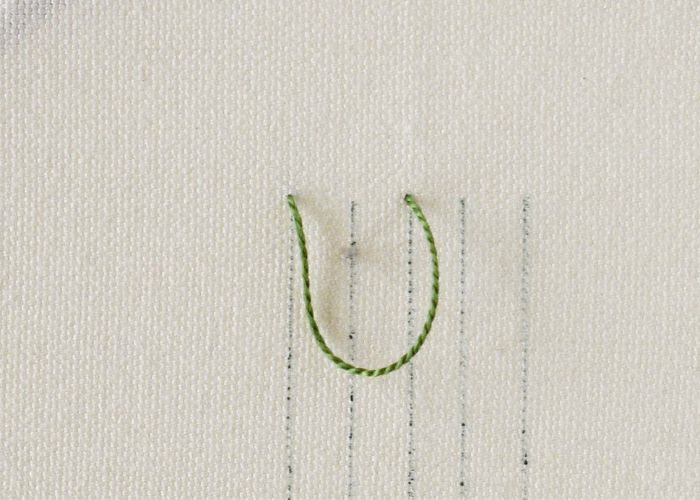
4. Pull the thread to close the loop and make a stitch to the fourth line. Leave a loop of a working thread open.
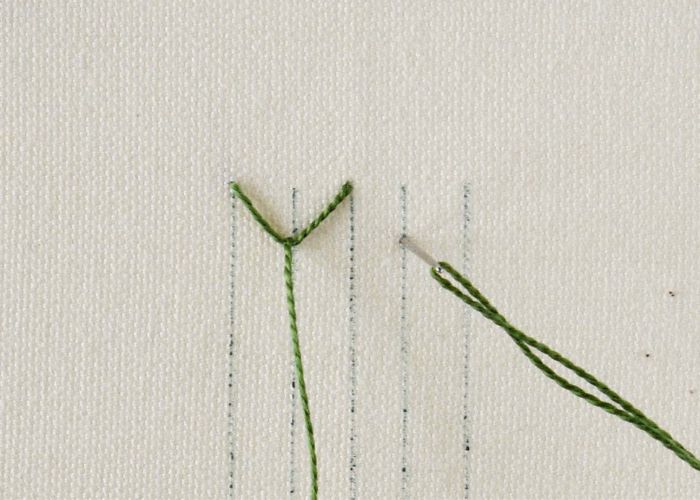
5. Take a needle up on the third line inside the loop, one stitch below.
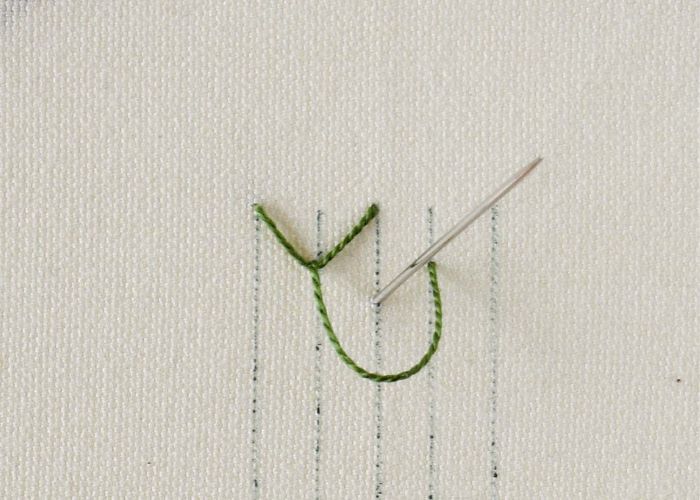
6. Make one more stitch to the fifth line and come up on the fourth line.
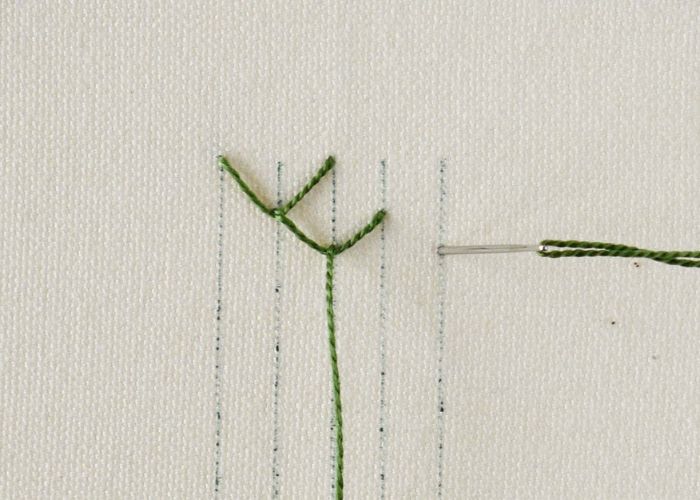
7. Now, move to the left. Make a stitch to the second line and come up on the third.
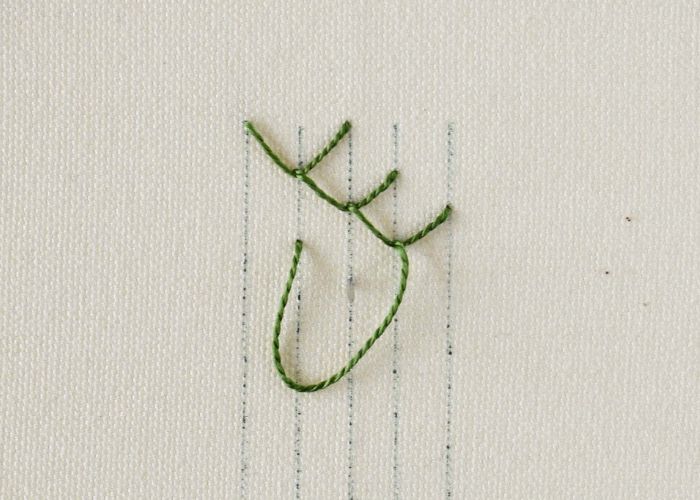
8. One more stitch to the left. Stitch to the first line and come up on the second line.
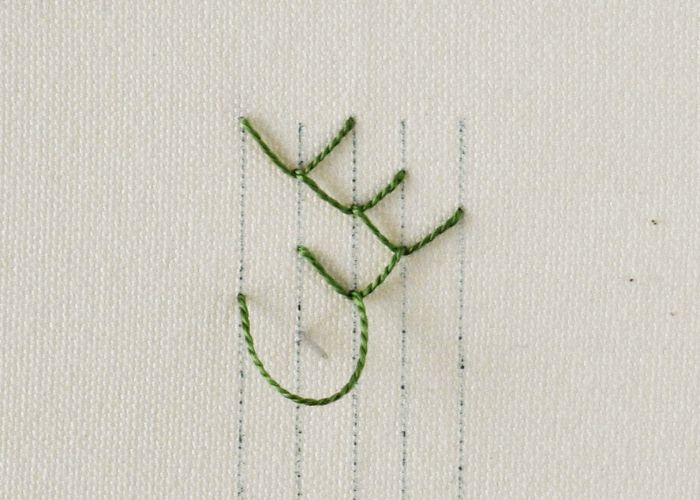
9. Continue with the stitches in this order until you finish the row.

10. Make a locking stitch at the end.
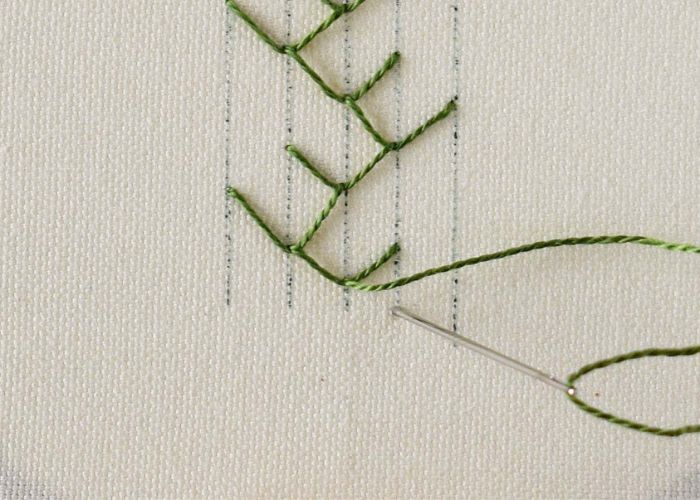
11. You can change the width and depth of the stitches to make the final stitch broader or narrower.

12. Also, you can embroider this stitch on the curved lines.
Video tutorial
Tools and materials I used for this sampler
Disclaimer. To cover the cost of creating free embroidery patterns and video tutorials for this blog, I do sometimes link to products. Please assume these links are affiliate links. If you choose to buy through my links then THANK YOU – it will make it possible for me to keep doing this.
Projects to practice Double Feather Stitch
What’s next?
If you’re in the mood to explore more hand embroidery stitches, check out the Stitches and Techniques page for the list of other fantastic stitches available on my blog. From timeless classics to modern twists, a whole world of stitches is waiting for you to explore and master. So, grab your hoop and needle, and let’s stitch our way to creative bliss!
Need More Guidance?
The top 10 hand embroidery stitches to learn is a free online course created for beginners.
